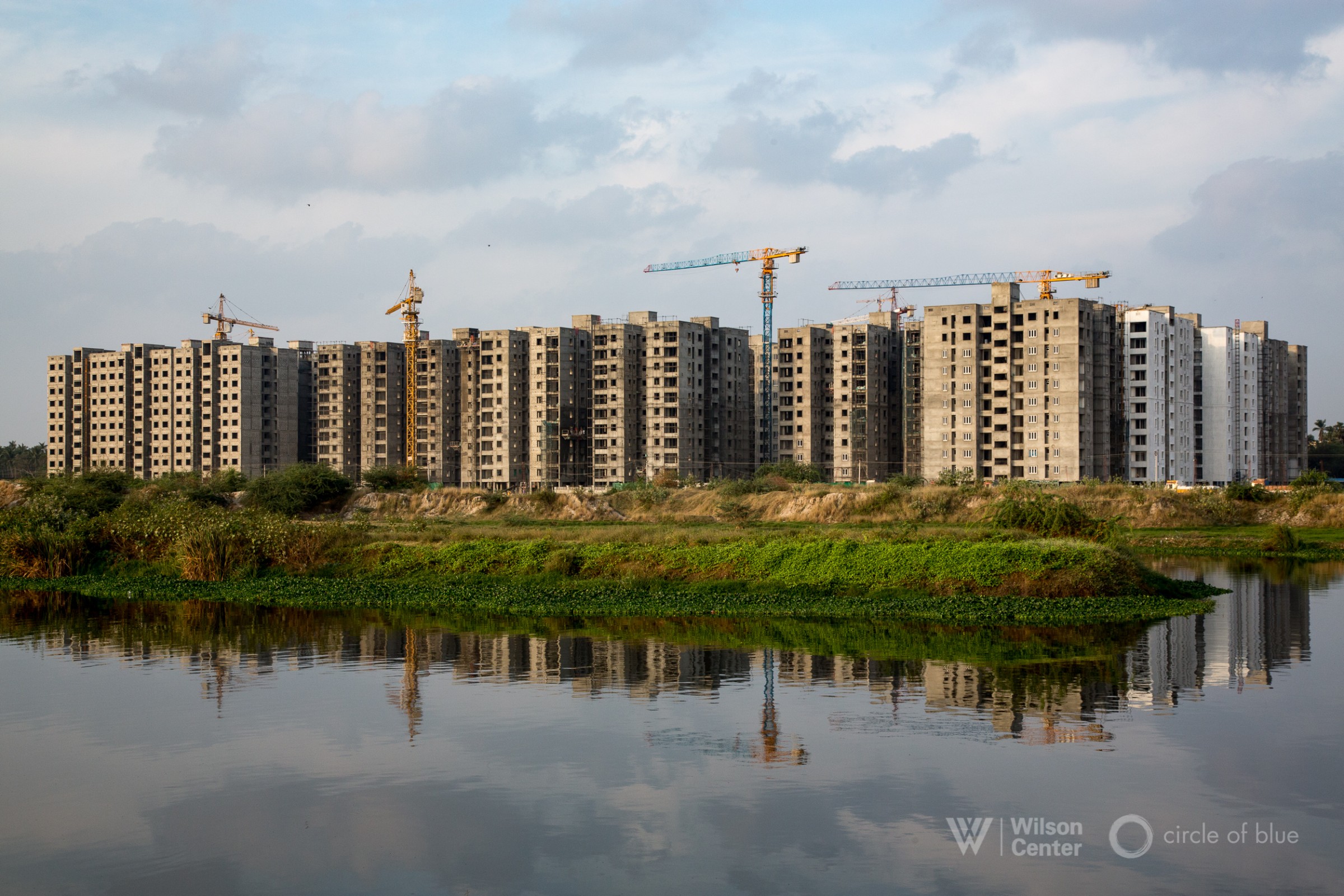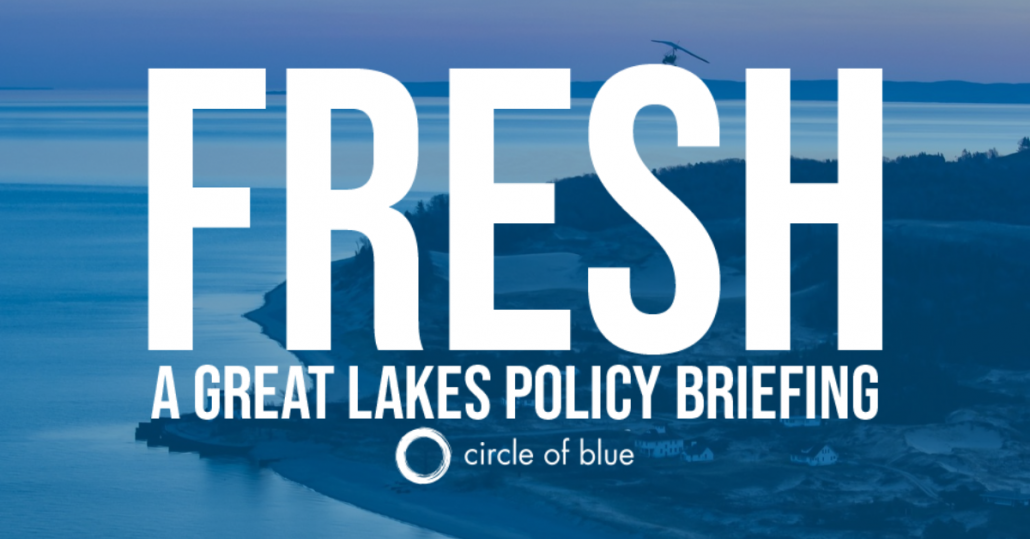The Stream, January 23, 2025: In Ghana, Water Cut-Offs Come Second to Gold Mining; Amazon River Communities Stranded After Drought

Pallikaranai Marsh, Chennai’s largest wetland shown here in a 2018 file photo, is being filled in with residential towers and other construction projects. Land use activists are pushing city officials to preserve flood-absorbing wetlands. Photo © Circle of Blue/Dhruv Malhotra
YOUR GLOBAL RUNDOWN
- Many river communities in the Brazilian Amazon — hit with their worst drought in more than 100 years in 2024 — remain isolated, their boats and floating homes damaged.
- Nearly 10 inches of snow fell in some cities in the deep U.S. South, prompting road and school closures and transportation delays.
- Ghana’s government appears to be prioritizing gold mining over clean water access, jailing activists as supply cut-offs and pollution worsen.
- A combination of over-construction, deforestation, and extreme heat have contributed to the loss of trees and waterways in Chennai, India — resources the city is desperately seeking to restore.
— Christian Thorsberg, Interim Stream Editor
Fresh: From the Great Lakes Region
Reassessing Recreational Fishing Value: For nearly 20 years, the Great Lakes’ recreational fishing industry was said to generate $7 billion annually, a number cited repeatedly by officials, reporters, politicians, and community members. Now, a recalculation ordered by the The Great Lakes Fishery Commission reveals that the true figure is about $5.1 billion, Michigan Public reports. It remains unclear when the $7 billion estimate was no longer accurate.
Bridge Michigan, Circle of Blue, Great Lakes Now at Detroit Public Television, Michigan Public and The Narwhal work together to report on the most pressing threats to the Great Lakes region’s water. This independent journalism is supported by the Charles Stewart Mott Foundation. Find all the work here.
- Life on the frontlines of Ontario’s critical mineral boom — The Narwhal
- What furor over drab Gaylord land says about Michigan’s energy transition — Bridge Michigan
- I Speak for the Fish: Why do mudpuppies matter? — Great Lakes Now
- Research finds some Great Lakes water birds negatively impacted by legacy pollution — Michigan Public
The Lead
Last September, Ghana’s water agency announced that due to contamination of the country’s main rivers from mining activities, certain communities would be cut off from water supplies. When protestors demonstrated in Accra, hoping to bring attention to this “looming environmental catastrophe” and add water as a ballot measure to the December general election, they were jailed for illegal assembly, Al Jazeera reports.
Environmentalists are pessimistic that the new president John Mahama will put an end to the illegal small-scale mines that are rampant across the country. With the price of gold rising to “close to $3,000 per gram” in late December, the activity known as “galamsey,” which translates to “gather them and sell,” remains profitable, at a detriment to the country’s waters.
By 2017, more than 60 percent of Ghana’s water bodies were polluted with mercury and other toxic metals used in the mining process. Thousands of acres of farmland have been polluted as a result, and in 2022 officials “allowed for mining concessions to be allocated in the country’s biodiversity hotspots, including protected forests.”
WaterAid, an international nonprofit, estimates that by 2030, Ghana may need to import water to meet its needs.
Recent WaterNews from Circle of Blue
- Opinion: Halt the Oil Flow Across Straits of Mackinac — Civic opposition and litigation aims to end Line 5 operation.
- World Economic Forum Appoints Circle of Blue Managing Director to its Global Future Council on the Future of the Energy Nexus — J. Carl Ganter Honored In Davos
This Week’s Top Water Stories, Told In Numbers
39.7
The lowest level that Brazil’s Negro River, measured in feet at the port of Manaus, reached last year amidst ongoing, debilitating drought in the Amazon basin, the Guardian reports. Compared to its usual level of 68.9 feet, this was the driest the river had been since records began 122 years ago. Despite a wetter January, grounded boats and floating homes remain stranded in and around other Amazon tributaries. Communities that rely on the river for travel are isolated, and fishing economies have suffered — many fishers are forced to walk miles to reach fisheries that are still intact. Overall, an estimated 140,000 families have been impacted by drought conditions.
31 million
The number of people across the U.S. South placed under a snowstorm warning this week, as communities across the Gulf Coast experienced some of the heaviest winter precipitation they had ever seen, Reuters reports. Four inches of snow in Houston prompted school closures on both Tuesday and Wednesday, while 9.8 inches of snow fell on New Orleans — appearing to break the previous record of 8 inches set in 1898. Mobile, Alabama also experienced half a foot of snow, a depth not seen in 144 years.
On the Radar
In 1988, “residential, commercial, and industrial areas” comprised just 18 percent of the city of Chennai, India. As of 2017 this increased to 50 percent, while agricultural lands were halved and deforestation expanded. Now home to roughly 7 million people, Chennai and the greater Tamil Nadu state face a crisis: Warming temperatures, exacerbated by the loss of tree cover, are disappearing lakes and freshwater bodies while communities struggle to stay cool, DW reports. Some communities, such as Auroville, have already begun action to reverse this feedback loop, reforesting their land and “integrating greenery” into everyday life. They hope to serve as a model for congested urban areas before the negative effects of pollution on human health and water access are irreversible.
In context: Chennai’s Security Tied to Cleaning Up Its Water
49th State Focus: Trump’s Executive Order Intends to ‘Unleash’ Alaska’s Resources
“Extraordinary Resource Potential”: An executive order signed Monday by U.S. President Donald Trump, at the behest of Alaska Gov. Mike Dunleavy, will prioritize the administration’s extraction of “an abundant and largely untapped supply of natural resources including, among others, energy, mineral, timber, and seafood” from Alaska. Environmentalists are worried about what this means for the environment: Alaska is home to 63 percent of America’s wetlands; 14 percent of the state’s area consists of freshwater sources, the most in the country; and 5 percent of the state is covered by glaciers.
Christian Thorsberg is an environmental writer from Chicago. He is passionate about climate and cultural phenomena that often appear slow or invisible, and he examines these themes in his journalism, poetry, and fiction.









Leave a Reply
Want to join the discussion?Feel free to contribute!